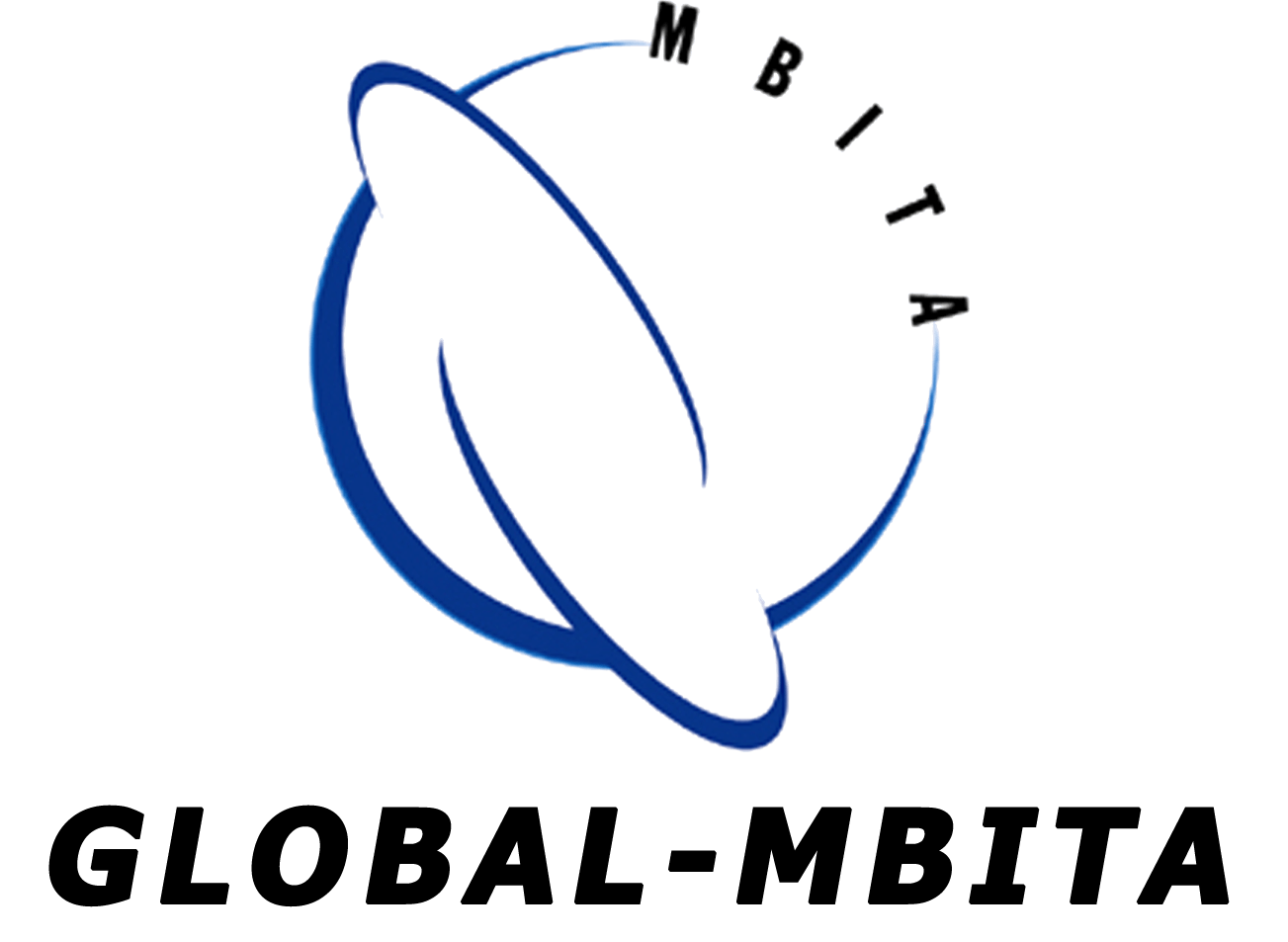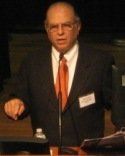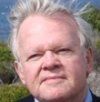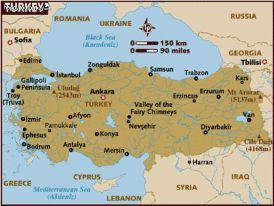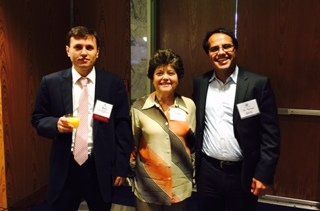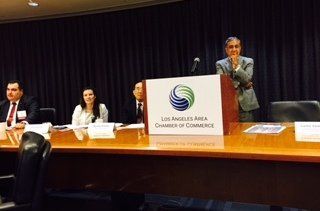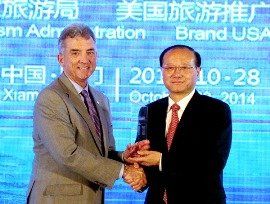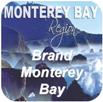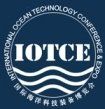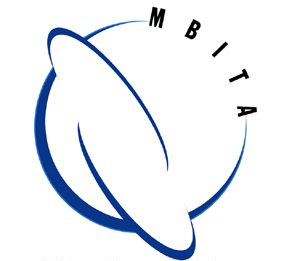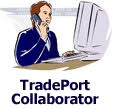UPDATE
In this issue we feature the editorial article that we wrote for the 'bible' of ocean technology, Sea Technology, regarding the Monterey Bay's world leading marine science community and its development to promote a healthy, vibrant and prosperous 'blue economy'. This issue also features a new member who has a legal background in global trade that is hard to match, and a special feature on the history of the Japanese Americans in the Salinas region of the Monterey Bay. Also some insightful articles in our marketing and trade finance sections from MBITA contributors and members. Enjoy.
President
Tony Livoti
MBITA
Vice President
Shay Adams
AIM Medical Sales
Members
Dr. Edward Valeau
Els Group LLC
Hartnell College
President Emeritus
Marcelo Siero
IdeasSiero
Jim Faith
Jim Faith & Associates
Monterey Bay's one-of-a-kind national marine sanctuary has seen hundreds of millions of dollars invested in 30 different marine science organizations located in Monterey Bay in the last 20 years. Now, this community is ready to share its expertise, technology, services and products in sustainable marine science with the rest of the world.
The Monterey Bay International Trade Association (MBITA) has initiated an outreach program to commercialize Monterey Bay's marine science community in the global marketplace by forming a partnership with the leaders of Qingdao's marine science community, starting with a Monterey Bay and California pavilion at the International Ocean Technology Conference & Expo (IOTCE 2015) in Qingdao this September.
The U.S.-China conference in June in Monterey Bay featured pressing topics concerning the oceans, such as sustainable marine aquaculture, offshore energy production, desalination, biofuel, breakthrough marine technologies, public policy issues, and renewable energy. With California's drought looming in the background, Donald Lewis, co-founder of the U.S.-China Trade and Innovation Initiative, unveiled a new strategy at the conference to dovetail "blue innovation" with "green innovation" in terms of U.S.-China scientific, technological and commercial cooperation.
The Monterey Bay marine science community is also making efforts to reach out to the offshore oil and gas industry to collaborate in making their operations more sustainable, especially in the wake of a recent oil spill in Southern California. Some of the immediate issues that offshore oil and gas can address with the marine science community involve curtailing leaks of oil and gas into the environment, further analysis of the environmental impact of offshore oil and gas exploration, and the socioeconomic impact of offshore oil and gas exploration on coastal communities.
We believe there is opportunity for the marine science community to collaborate with the offshore oil and gas industry not only to assess its environmental impact but also to help provide sustainable solutions to these challenges.
"We must deepen our understanding of the ocean and constantly improve our technical capacity for marine resource exploitation through innovation and technology," said Hao Yunxing, main organizer of the IOTCE conference in Qingdao.
Monterey Bay is an example of how international partnerships can leverage science to promote economic development, as well as sustainable use of ocean resources. The U.S. and China are two big players on the world stage, and cooperation on trade, investment and environmental issues can shine a light on what's possible.
ARTICLE LINKS:
http://sea-technology.com/editorial/2015/editorial0815.php
or http://www.mbita.org/events/flyers/SEATECHNOLOGY-ART082015.pdf
Sea Technology Magazine is read worldwide in more than 110 countries by management, engineers, scientists and technical personnel working in industry, government and educational research institutions. Readers are involved with oceanographic research, fisheries management, offshore oil and gas exploration and production, undersea defense including antisubmarine warfare, ocean mining and commercial diving.
Mr. Rowles is fluent in French, German, Portuguese and Spanish, with extensive negotiating experience in both Portuguese and Spanish. He also speaks conversational Arabic and Persian (Farsi), and in 2014 completed a year of Mandarin Chinese study at Stanford. He holds a J.D. and a master's degree in comparative law from Stanford, and an advanced doctoral degree (S.J.D.) in International Law from Harvard.
He has worked on international transactions at a leading national law firm (Bingham McCutchen), in Boston, including joint ventures in many countries, and as senior counsel for leading global companies, focusing on project finance and infrastructure development projects in Brazil and the Middle East, and handling a variety of legal matters for the Brazilian subsidiary of a financial services company.
Mr. Rowles is experienced in working closely with foreign lawyers and company officials, often in their own language, is a good source of information on political and legal developments in a given country, and can also perform or arrange high-quality legal translations as needed.
James Rowles, Esq.
International Legal and Management Consulting
P.O. Box 7153
Menlo Park, CA 94026
Tel. (650) 750 5742
Email: jrowles@pacbell.net
More info
Japantown in Chinatown: Salinas California
by Mae Sakasegawa
Submitted by MBITA member Transmetrics, Inc.
Many Japanese and Chinese-owned stores, businesses, professions, restaurants, hotels, boarding houses, pool halls, bathhouses, barber shops, garages, tailors, optometrists, beauty shops, doctors, dentists, etc., were located on Lake Street, Soledad Street, Market Street and California Street, in Salinas Chinatown.
Many Japanese businesses were run by Issei with help from their Nisei (secondgeneration) children. The Nisei were establishing themselves as solid citizens of the community. Many owned their homes, attended Buddhist or Christian churches, and their children attended local schools - education was stressed by all. Nisei entered schools
speaking Japanese at home with their Issei parents and learning English in school.
The Japanese community was enjoying the bounty of their hard work, perseverance and determination. They contributed much to the community and to the produce industry of the fertile Salinas Valley. December 7, 1941 changed all that. On April 1, 1942, Executive Order 9066 - all Japanese citizens and legal aliens are ordered to evacuate California, Oregon and Washington. Each individual or family group must carry with them their bedding and linen, toilet articles, extra clothing, knives, forks and spoons, plates, bowls and cups, and essential personal effects.
In a few days Japantown disappeared. All were incarcerated in the barracks at the Salinas Assembly Center (Rodeo Grotmds), and then in July were moved to Poston, Arizona. To leave the mild climate of Salinas for the Arizona desert in July, temperatures exceeding 100 degrees, was unbearable. Salt pills and wet towels were passed out to some of the bewildered internees. Many fainted from the extreme heat. Tar-papered barracks with cots for beds again greeted them. Everyone wondered what would become of them in the middle of this desert. Perhaps the war would soon end?
Meanwhile, everyone did their best to make life easier. Trees from the desert were planted, flowers from seed were planted, and canals were dug to raise crops. Schools, churches, clubs, recreation, kitchen staff, police, fire chief, postmaster, and contractormaintenance, block managers, doctors, nurses, dentists, all volunteered and were paid $19 a month. Some worked in the camouflage plant for the Armed Forces. Soon classes were started for sewing, bird carving, etc. Many other activities- baseball, basketball, golf in the desert sand - were started, all within the confines of barbed wires and guard towers.
Poston closed in November 1945. The last camp was closed in March 1946. Many had relocated previously to other states to pursue their lives outside the camps. Of those who chose to return, very few had kept their properties. Many had help from friends who welcomed them back. Most faced discrimination and hostility. They were refused service in many stores, restaurants and businesses. Many were able to stay at the Japanese Presbyterian Church until they could get settled into whatever jobs they could get to sustain themselves and their families.
In 1952 the Japanese were the last immigrants to be allowed to become naturalized citizens. The California Supreme Court ruled the California Alien Land Law violated the 14th Amendment of the U.S. Constitution by being racially discriminatory and established the right of aliens eligible for citizenship to purchase land.
Ayse's Corner
Ayse's Corner is a feature column of the World TradeWinds eZine'. Ayse Oge is a published author and global trade marketing expert and author of Emerging Markets.
The Consulate General of Turkey & Office of Commercial Attache in Los Angeles, in cooperation with the Los Angeles Chamber of Commerce, organized an event on Business and Investment Opportunities in Turkey on July 23, 2015 at the Chamber of Commerce. Keynote speakers were Ms. Gulru Gezer - Consul General of Turkey, Mr. Murat Goren - Commercial Attache', Ms. Olivia Curran - Investment Support and Promotion Agency of Turkey, and Mr Kadir Sonmez - Turkish Airlines Cargo Manager.
Here are some highlights from the conference:
- Turkey's privatization efforts are aimed at opening up the country's infrastructure in the transport, utilities and general construction sectors to investors.
- Energy and utilities will continue to be a major part of Turkey's total infrastructure industrial value. The forecasts indicate over 6% growth between 2015 and 2019.
- Cutting back on red tape and offering debt guarantee on government tendered projects are among the incentives offered to investors.
- Turkey's position as a transit country for energy, from the Caspian region to Europe, creates whole new opportunities for the development of an energy infrastructure.
Investment Incentives
- Value Added Tax is omitted for imported and/or domestically provided machinery and equipment within the scope of the investment encouragement certificate. Customs duty is omitted for the machine and equipment.
- For investment loans, 1-2 percentage points for foreign currency credits are offered.
- Government land is allocated for the investments.
- Priority investments in tourism, mining, railroad and maritime transportation, biotechnology, defense industry, generating electricity from coal, and energy efficiency made in manufacturing facilities enjoy VAT and Custom Duty exemption, land allocation and interest support.
This is the right time for investors and exporters to discover and evaluate the opportunities presented in a resilient market. The benefits of investing in a country like Turkey include major financial success, fast economic growth, and a bright future for the next generation.
For any specific questions pertaining to investments and exports, you can contact the Office of Commercial Consul, Consulate General of Turkey through their website: www.economy.gov.tr
Ayse Oge is President of Ultimate Trade, International Trade Consulting, Speaking and Training. Ayse Oge is International Trade Consultant, Speaker and Trainer. She has served as an instructor for SCORE (Service Corps of Retired Executives) with the same goal as her focus. Ms. Oge has authored numerous articles and several publications including books, World Smart Veterans: From War to International Trade, Go Global to Win and World Wise Children. Ms. Oge's list of certificates, honors and awards for her leadership and service includes The Business Education State Advisory Committee.
MBITA's trade finance column features articles from the experts in the field of EXPORT FINANCING.
You need to offer competitive payment terms to grow your international sales. But what happens if you don't get paid? Exporters can protect their foreign receivables against default risks with a trade credit insurance policy. Here's an update on the availability of export credit insurance-along with last year's US export sales (which totaled $1.6 trillion in 2014)-for some of the leading US export markets.
LATIN AMERICA ($408bn): The region's economy is growing but commodity prices and weak exports are impacting countries that lack domestic demand. Credit insurance is readily available for sales to Mexico ($240bn), Brazil ($42bn), Colombia ($20bn), Chile ($17bn), Peru ($10bn), and Central America ($33bn). Insuring export sales to Argentina ($11bn) is difficult. Venezuela ($11bn) remains entirely off-cover.
EUROPEAN UNION ($277bn): Export credit insurance is broadly obtainable for most of the region. The economies of Germany ($49bn) and France ($31bn) are stable but growth is flat. Italy ($17bn) and Spain ($10bn) remain of greatest concern, especially if Greece (<$1bn) were to exit the euro-zone. The UK ($54bn) and other non-euro economies are just as affected by the euro countries' recession.
CANADA ($312bn): As an individual country Canada is the largest trading partner of the USA but economic factors are not all the same as here. Most of Meridian's credit insurance clients with sales to Canada elect to include coverage on this market rather than risk bad debt losses north of the border.
CHINA ($124bn): After Canada and Mexico, the next largest country for US exports is China. The Chinese economy has slowed but demand for US products remains robust. Credit insurers are on-cover for China but exporters face challenges in obtaining relevant financial data on smaller Chinese companies.
REST OF PAC RIM ($272bn): Export credit insurance is broadly available for Japan ($67bn), South Korea ($45bn), Taiwan ($27bn), and most ASEAN countries ($79bn) as well as Australia ($27bn). These exporting economies are hoping global demand for their products will soon begin growing again.
OTHER MARKETS where US export trade is projected to grow-and where credit insurers are offering coverage-include India ($22bn), Turkey ($12bn), parts of the MENA region ($71bn), Nigeria ($6bn), and South Africa ($6bn). Coverage is available but more restricted for the rest of Africa ($26bn). For both political and economic reasons, Russia ($11bn) is off-cover at the present time.
MERIDIAN FINANCE GROUP provides trade finance tools that exporters use to grow their international sales . . . including credit insurance from every underwriter in the market. For more information, visit www.meridianfinance.com, call (310) 260-2130, or email insurance@meridianfinance.com.
©2015 Meridian Finance Group
Meridian Intl Insurance Services
CA Lic 0C84279
FACT SHEET: U.S.-China Tourism Year
On September 25, the United States and China announced a U.S.-China Tourism Year for 2016 to celebrate the recent reciprocal extension of visa validity and support increased travel and tourism exports. The two sides will work toward expanding and shaping U.S.-China travel and tourism, and strengthening the bond between our two peoples.
International Travel to the United States
Travel and tourism is the United States' largest export services industry, generating a $74 billion trade surplus for the U.S. economy in 2014. International travel to the United States generated $220.6 billion in 2014, supporting 1.1 million jobs.
China is an important contributor to revenues generated by international travel to the United States:
- China was the number two country for visitor spending to and within the United States in 2014 with an estimated $23.8 billion spent on travel and tourism.
- China accounted for 2.9 percent of total international arrivals in the United States in 2014, with an estimated 2.2 million travelers (a 20+ percent increase over 2013).
- National parks are a significant attraction for Chinese visitors to the United States, with 40% saying they had been to a national park when visiting.
China represents a significant growth market: According to the United Nations World Tourism Organization, China is the world's largest tourism market, representing more than 100 million outbound travelers in 2014, and Global Chinese overseas travel expenditures in 2013 were a record $129 billion.
U.S. - China Tourism Year
Throughout the year, the U.S. Department of Commerce and the China National Tourism Administration (CNTA), in collaboration with Brand USA and other partners, will design and execute a year of events and activities that will promote and further open travel between the United States and China, expand market access, and advance initiatives to ensure a quality visitor experience for increasing numbers of travelers to and from both nations.
The U.S. - China Tourism Year provides a platform for the United States and China to continue to improve and upgrade systems to accommodate anticipated travel flows by:
- Continuing progress on visa processing: About 2.5 million visas have been processed for Chinese citizens since the announcement of validity extension in November 2014, a 52.6 percent increase over the same period in the previous year and a substantial growth in first-time applicants.
- Improving the border entry experience: The United States will continue to make progress toward a "Best in Class" arrivals experience for international visitors and will develop and make more readily available Chinese language materials and website pages.
Increased travel and tourism also requires dynamic, modern aviation systems, capable of supporting increased passenger and cargo traffic. Both governments will continue efforts to develop aviation policies, institutions and services to ensure the system adapts to meet the needs for both immediate and long-term growth.
Additionally, recognizing the important role that natural landscapes play in attracting visitors and promoting conservation, the Chinese Government and the U.S. National Park Service will partner to share lessons learned and best practices in the designation, development and management of a Chinese national park system through a Statement of Cooperation. U.S. and Chinese land and water governance agencies also will work to further their partnerships around sister parks, sister fish and wildlife reserves, and cooperation on forestry management.
Read source press release.
##########
International Trade Administration
The International Trade Administration (ITA) is the premier resource for American companies competing in the global marketplace. ITA has 2,100 employees assisting U.S. exporters in more than 100 U.S. cities and 72 countries worldwide. For more information on ITA visit www.trade.gov
##########
The National Export Strategy is available also at
http://trade.gov/NEI and http://export.gov.
United States Department of Commerce
Office of Public Affairs - Tel. 202-482-4883
##########
Must See Video on Global Trade
Click HERE to see the 'Making Hay' video by Dan Gardner of Trade Facilitators, Inc. This multi-industry webinar is a 'must see' for global trade students and practitioners of all levels and World TradeWinds considers it to be one of the most concise and informative webinars on the history, present state and the future of the Global Trade industry there is available today.
Sponsors, Partners, & Affiliates
